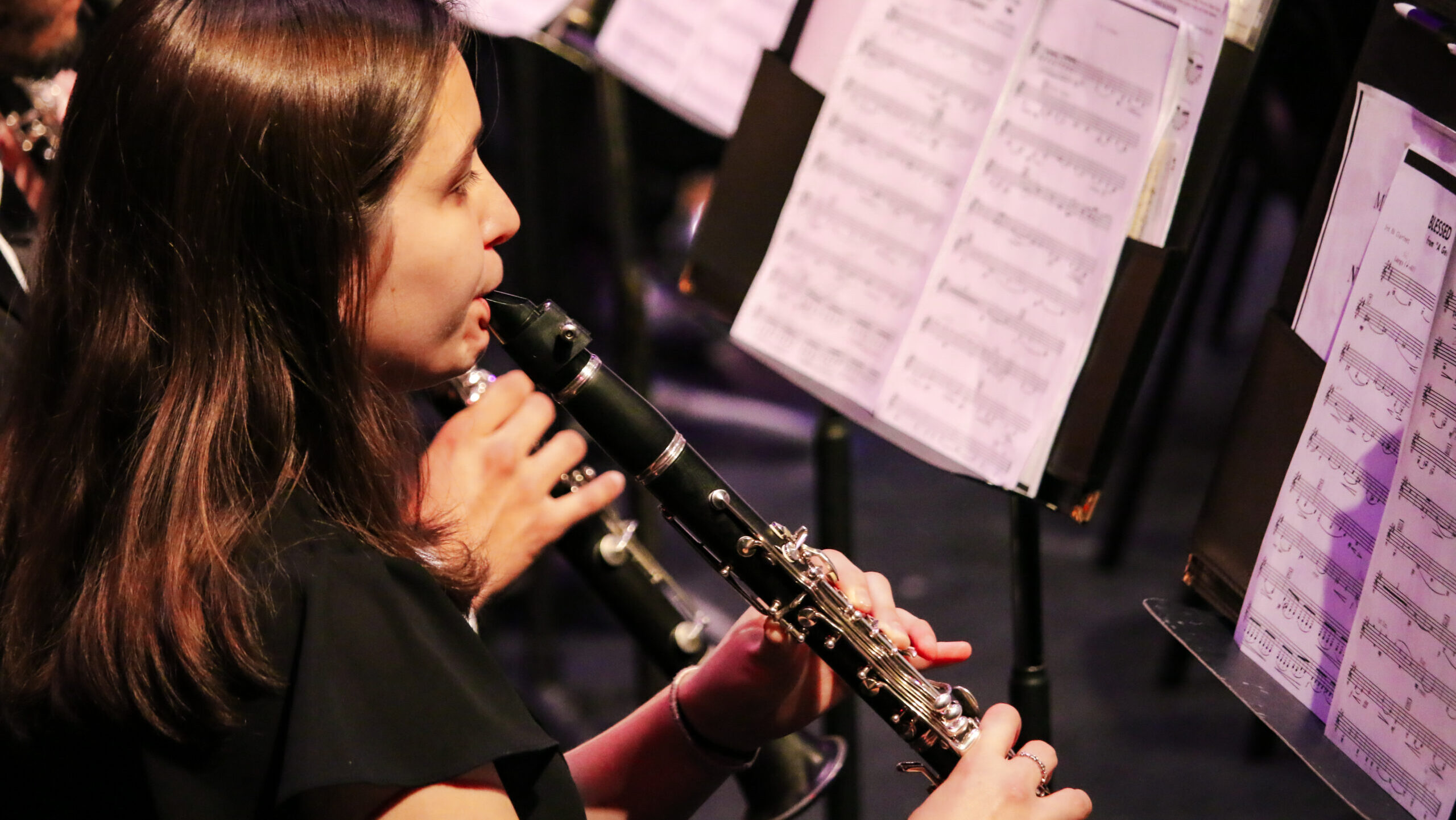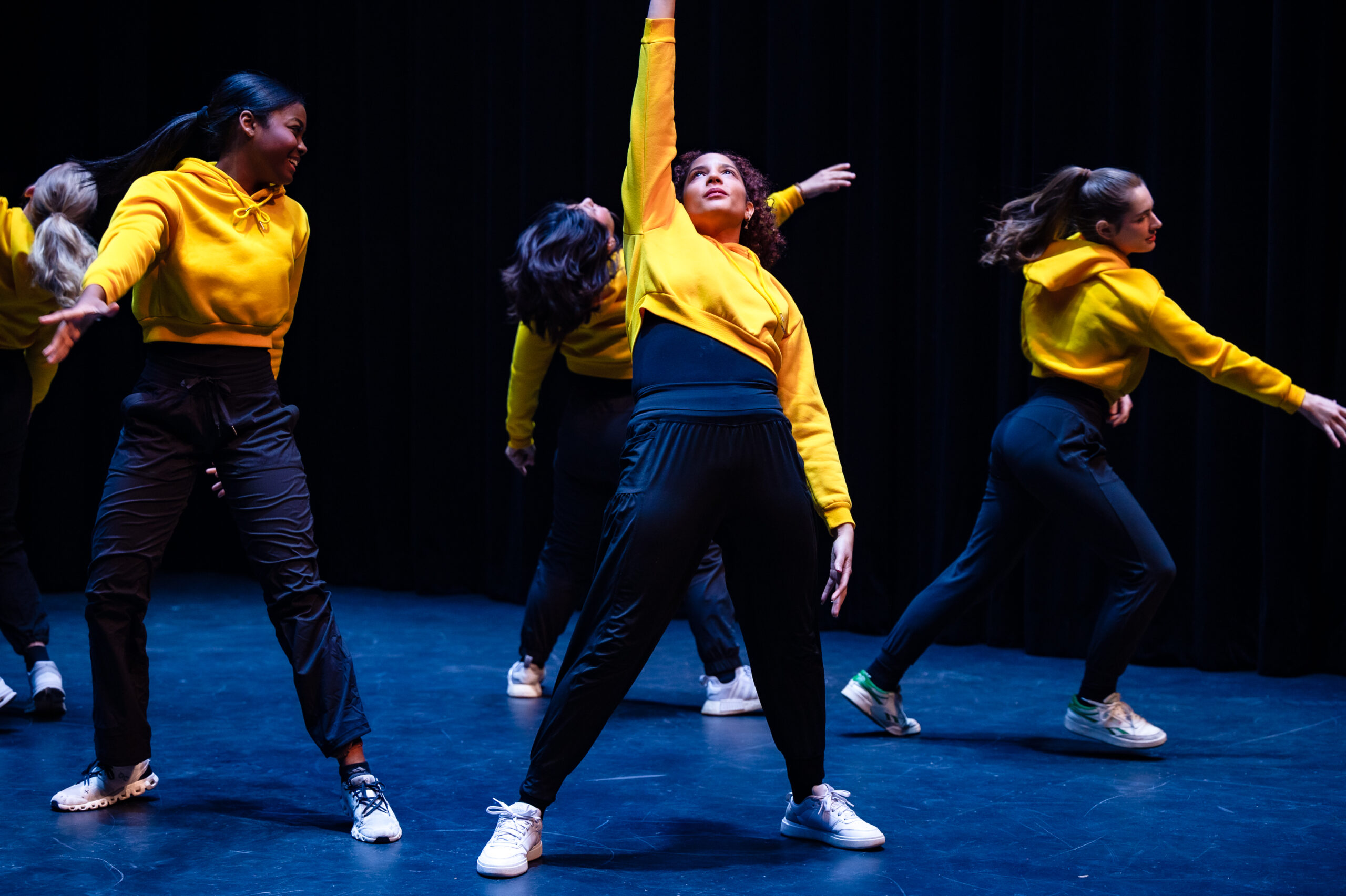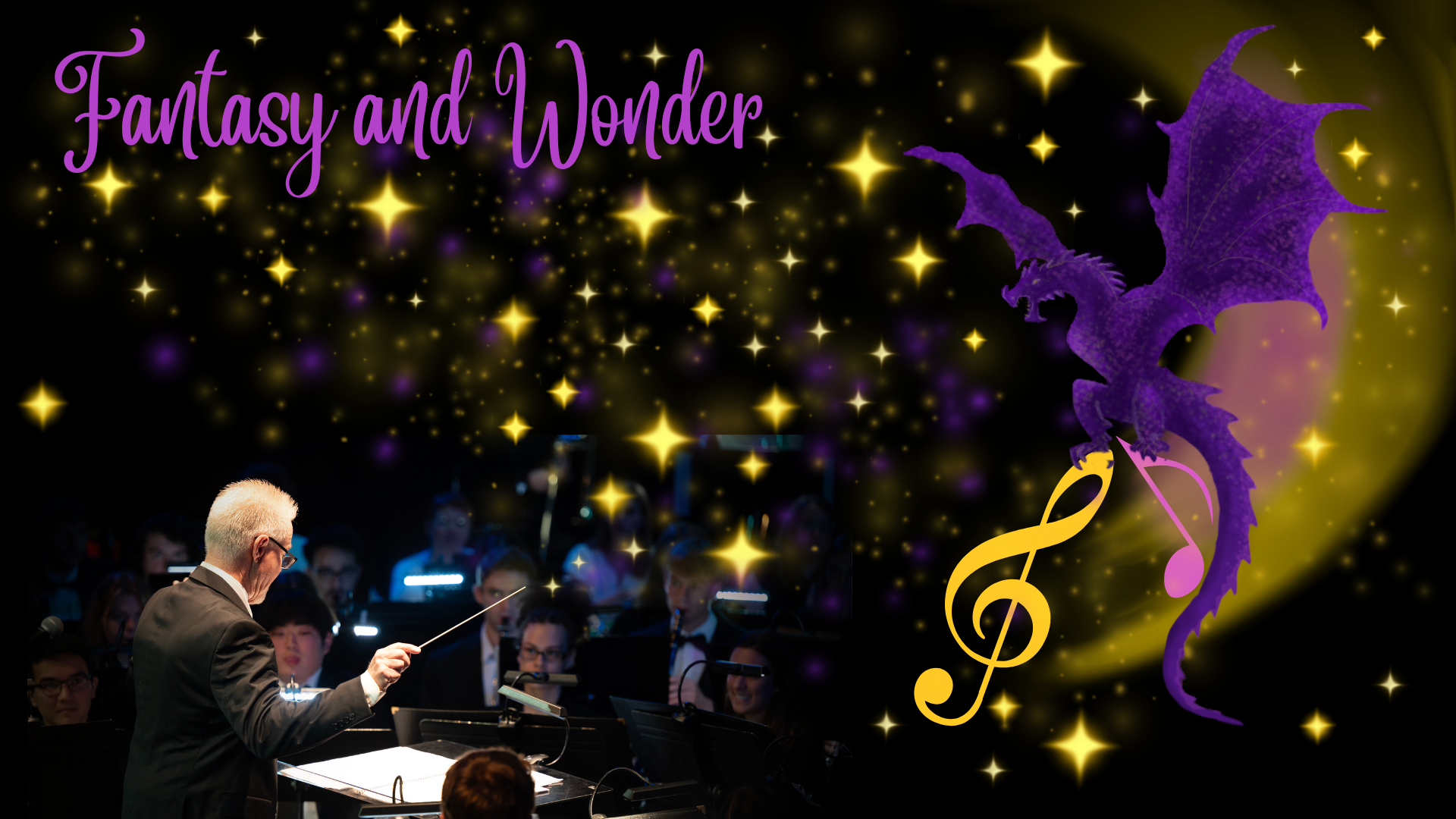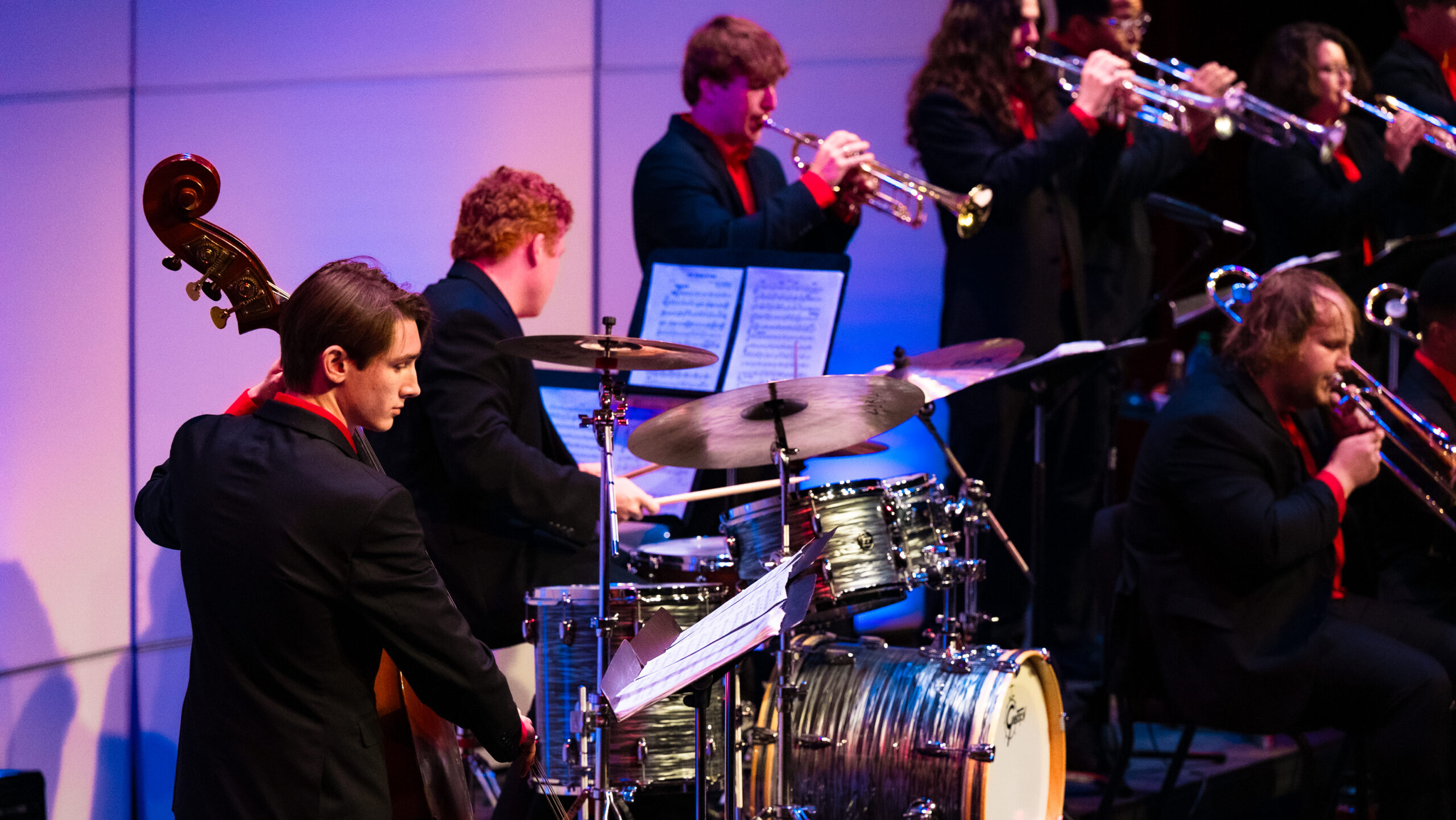presents
NC State Wind Ensemble
With
Woodwind Quintet
Brass Quintet
Sax Ensemble
Trombone Ensemble
Paul Garcia, conductor
PERFORMANCE OVERVIEW
PROGRAM
| Until The Scars |
| John Mackey Performed by the NC State Wind Ensemble |
Program Notes
This piece is an adaptation of the first movement of “Wind-Dark Sea: Symphony for Band,” a work based on the ancient story of “The Odyssey” by Homer. After ten years of bloody siege, the Trojan War was won because of Odysseus’ gambit: A horse full of soldiers, disguised as an offering. The people of Troy took it in as a trophy and were slaughtered. Odysseus gave the Greeks victory, and they left the alien shores for home. But Odysseus’ journey would take as long as the war itself. Homer called the ocean on which Odysseus sailed a wind-dark sea, and for the Greek king it was as murky and disorienting as its name; he would not find his way across it without first losing himself. In this section of the story, Odysseus, having filled his ship with the spoils of war, leaves for home, but he carried another, more dangerous, cargo: Pride. This movement opens with his triumphal march and continues as he and his crew maraud through every port of call on their way home.
| Danzon No. 2 |
| Arturo Marquez trans. Oliver Nickel Performed by the NC State Wind Ensemble |
Program Notes
Born in Mexico, Arturo Márquez spent his middle school and high school years in La Puente, California, where he began his musical training. After he returned to Mexico, Márquez studied at the Conservatory of Music and the Institute of Fine Arts in Mexico, followed by private study in Paris with Jacques Castérède, and then at the California Institute of the Arts with Morton Subotnick, Stephen Mosko, Mel Powell, and James Newton.
At that time, Márquez was much interested in avant garde techniques and processes, although his time at Cal Arts gave him ideas about how jazz and world music elements could be added to the mix. His first Danzón, composed in 1992, shows how that was beginning to play out. It was essentially an electronic piece for tape and optional saxophone, but including Minimalist aspects and references to the traditional danzón, an old salon dance from Cuba that became very popular in Veracruz and then in Mexico City, where it still holds sway.
This initial elaboration on the danzón proved crucial for Márquez, renewing his own musical language in a turn away from Modernist impulses. His Danzón No. 2, one of the most popular pieces of “classical” music of the last 40 years, confirmed this new direction. According to the composer:
The idea of writing the Danzón 2 originated in 1993 during a trip to Malinalco with the painter Andrés Fonseca and the dancer Irene Martínez, both of whom [have] a special passion for the danzón, which they were able to transmit to me from the beginning, and also during later trips to Veracruz and visits to the Colonia Salon in Mexico City. From these experiences onward, I started to learn the danzón’s rhythms, its form, its melodic outline, and to listen to the old recordings by Acerina Mariano Merceron and his Danzonera Orchestra. I was fascinated and I started to understand that the apparent lightness of the danzón is only like a visiting card for a type of music full of sensuality and qualitative seriousness, a genre which old Mexican people continue to dance with a touch of nostalgia and a jubilant escape towards their own emotional world; we can fortunately still see this in the embrace between music and dance that occurs in the State of Veracruz and in the dance parlors of Mexico City.
Danzón 2 … endeavors to get as close as possible to the dance, to its nostalgic melodies, to its wild rhythms, and although it violates its intimacy, its form and its harmonic language, it is a very personal way of paying my respects and expressing my emotions towards truly popular music.
— Arturo Marquez
| Tico Tico no Fuba |
| Zequinha de Abreu Arr. Sjoerd Van Der Veen Performed by Reece Neff, Megan Vezzetti, Cameron Kellner, Erika Fetvedt, Jacob Timin |
| Brass Quintet no. 3 |
| Victor Ewald Performed by Owen Forbes, Rocco Pugliese, Luke Ryan, Jack Fitzpatrick, Srikar Desemsetti |
| Boris Goes to Dublin |
| Alun Cook Performed by Cameron Kellner, Seth Olanovich, Nathaniel Baird, Julia Gale, Nate Robinson Jack Fulp, Katherine Fowler, Ethan Newhouse, Matt Cash |
| Performance by the Trombone Choir |
| To be announced from the stage |
| Armenian Dances (Part I) |
| Alfred Reed Performed by the NC State Wind Ensemble |
Program Notes
Armenian Dances, Parts I and II, constitute a four-movement suite for concert band or wind ensemble based on authentic Armenian folk songs from the collected works of Gomidas Vartabed (1869-1935) [commonly known as Komitas], the founder of Armenian classical music.
Part I, containing the first movement of this suite (the remaining three movements constituting Part II), is an extended symphonic rhapsody built upon five different songs, freely treated and developed in terms of the modern integrated concert band or wind ensemble. While the composer has kept his treatment of the melodies within the general limits imposed on the music by its very nature, he has not hesitated to expand the melodic, harmonic, and rhythmic possibilities in keeping with the demands of a symphonic-instrumental, as opposed to an individual vocal or choral approach to its performance. Nevertheless, it is hoped that the overall effect of the music will be found to remain true in spirit to the work of this brilliant composer-musicologist, who almost single-handedly preserved and gave to the world a treasure trove of beautiful folk music that to this day has not yet become as widely known in the Western world as it so richly deserves. It is hoped that this new instrumental setting will prove to be at least a small step in this direction.
Part I of Armenian Dances was completed in the summer of 1972 and first performed by Dr. Harry Begian (to whom the work is dedicated) and the University of Illinois Symphonic Band on January 10, 1973, at the CBDNA Convention in Urbana, Illinois.
Part I is built upon five Armenian folk songs, which were first notated, purified, researched, and later arranged by Gomidas for solo voice with piano accompaniment or unaccompanied chorus. In order of their appearance in the score, they are: “Tzirani Tzar” (“The Apricot Tree”); “Gakavi Yerk” (“Partridge’s Song”); “Hoy, Nazam Eem” (“Hoy, My Nazan”); “Alagyaz”; and “Gna, Gna” (“Go, Go”).
“The Apricot Tree” consists of three organically connected songs that were transcribed in 1904. Its declamatory beginning, rhythmic vitality, and ornamentation make this song highly expressive.
“The Partridge’s Song” is an original song by Gomidas; it was published in 1908 in Tiflis [Tbilisi], Georgia. He originally arranged it for solo voice and children’s choir and later for solo voice with piano accompaniment. It has a simple, delicate melody that might perhaps be thought of as depicting the tiny steps of the partridge.
“Hoy, Nazan Eem” was published in 1908 in a choral version arranged by Gomidas. This lively, lyric love song depicts a young man singing the praises of his beloved Nazan (a girl’s name). The song has dance rhythms and ornamentation that make it an impressive, catchy tune.
“Alagyaz” (the name of a mountain in Armenia) was first written by Gomidas for solo voice with piano accompaniment and is also in a choral arrangement. It is a beloved Armenian folk song, and its long-breathed melody is as majestic as the mountain itself.
“Go, Go” is a humorous, light-textured tune. In performance, Gomidas coupled it with a contrasting slower song, “The Jug.” Its repeated note pattern musically depicts the expression of laughter. This song also is in a recitative style.
| Give Us This Day: Short Symphony for Wind Ensemble |
| David Maslanka Performed by the NC State Wind Ensemble |
Program Notes
David Maslanka (1943-2017) was an American composer whose cerebral music ranges from chamber music miniatures to large, epic symphonies. Born in New Bedford, MA, Maslanka studied at the Oberlin Conservatory of Music (including a year at the Salzburg Mozarteum) and with H. Owen Reed at Michigan State University. He spent his early career teaching at several institutions before dedicating himself solely to composition in 1990. He won several awards for his music, and he worked solely on commission for many years. His compositions for wind band won him particular acclaim, including more than a dozen concertos, seven symphonies (plus two more for orchestra), and several concert pieces, including A Child’s Garden of Dreams. His Symphony no. 10 remained unfinished at his death, and was eventually completed by his son, Matthew.Give Us This Day was written in 2006 on a commission from a consortium of high school and college bands led by Eric Weirather at Rancho Bueno Vista High School in Oceanside, California. Maslanka provides the following program note in the score:
The words “Give us this day” are, of course, from the Lord’s Prayer, but the inspiration for this music is Buddhist. I have recently read a book by the Vietnamese Bhuddist monk Thich Nhat Hahn (pronounced “Tick Nat Hahn”) entitled For a Future to be Possible. His premise is that a future for the planet is only possible if individuals become deeply mindful of themselves, deeply connected to who they really are. While this is not a new idea, and something that is an ongoing struggle for everyone, in my estimation it is the issue for world peace. For me, writing music, and working with people to perform music, are two of those points of deep mindfulness.
Music makes the connection to reality, and by reality I mean a true awakeness and awareness. Give Us This Day gives us this very moment of awakeness and awareness so that we can build a future in the face of a most dangerous and difficult time.
I chose the subtitle, “Short Symphony for Wind Ensemble,” because the music is not programmatic in nature. It has a full-blown symphonic character, even though there are only two movements. The music of the slower first movement is deeply searching, while that of the highly energized second movement is at times both joyful and sternly sober. The piece ends with a modal setting of the choral melody “Vater Unser in Himmelreich” (Our Father in Heaven) – No. 110 from the 371 four-part chorales by Johann Sebastian Bach.
— David Maslanka
PERFORMERS
NC State Wind Ensemble
Flutes
AJ Magistrado (co-principle)
Kate Sullivan (co-principle)
Rebecca Moore
Evan Yun
Ellie Murray
Caitlin Potter
Bailey Dugan
Annamarie Cheek
Mackenzie Phillips
Oboes
Megan Vezzetti
Cameron Kellner
Clarinets
Jordan Eilers
Jacob Timin
Claire Siegel
Sela Bettoli
Pen Hunter
Mitchell Sefton
Zachary Dodson
Faith Richards
Lizzie Rappaport
Emmie Cumby
Jake Bates
Bassoons
Ryan Gibson
Erika Fetvedt
Bass Clarinets
Jake Bramhall
Emily Dodson
E Chapman
Saxes
Seth Olanovich – Alto 1
Nathaniel Baird – Alto 1
Julia Gale – Alto 2
Nate Robison – Alto 2
Jack Fulp – Tenor
Katherine Fowler – Tenor
Matt Cash – Bari
Ethan Newhouse – Bari
Horns
Alex Troutman
Catherine Farnham
Trevor Petzold
Erik Svanes
Christopher MacKay
Emily Cox
Johan Catlin
Trumpets
Owen Forbes
Eiad Yakout
Srikar Desemsetti
Nick Novelli
James Rhile
Eelco Tinga
Virginia Griffith
Avery Vega
Trombone
Max Abelson
Ben Poovey
Jack Fitzpatrick
Luke Sbityakov
Liam Weiss
Euphoniums
Daniel Bailey
Matthew Pearce
Jonathan Jenkins
Tuba
Rico Abelson
Tyler Smith
Scott Elliott
Payton Wurst
Luke Ryan
Percussion
Jason Fogelsonger
Emma Hamrick
Elizabeth Ingram
Zeiad Yakout
Casey Griffin
Karl Shroff
Vadin Ha
Liam Courtright
Bodey Good
Piano
Elaine Wolochuk
MORE FROM THE DEPARTMENT
- Categories:



